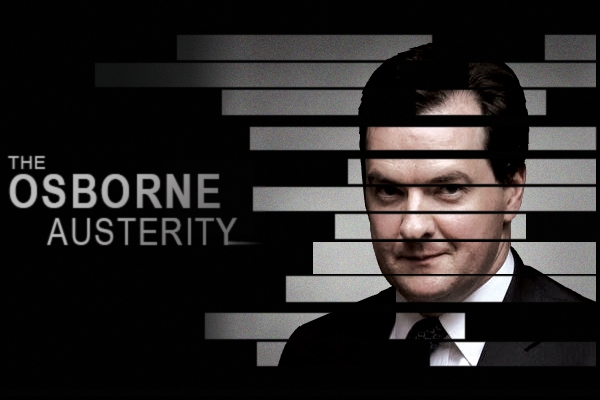How much trouble is George Osborne in? We don’t need to wait until his mini-Budget tomorrow, we already know most of it. And we’ll enter that peculiar Budget game, where the already-known is restated and treated like news. CoffeeHousers might like to get ahead of the curve.
Growth evaporating
The Office for Budget Responsibility will have to follow the other economic forecasters and downgrade its growth forecasts for 2012 and 2013 (again). The Treasury collects independent forecasts monthly, and here’s how the picture has deteriorated since March:
Although the OBR significantly downgraded its forecasts for 2012 and 2013 last year, it hasn’t ever done so for its longer-term forecasts for 2014-16. But it will have to now, probably from around 3 per cent to 2 per cent.
Deficit forecasts up
A slower recovery means lower tax receipts, higher benefit spending and bigger deficits. The nugget of good news for George Osborne is that the government borrowed a little less last year than the OBR thought it would — £121.4 billion according to the ONS, compared to the £126 billion the OBR was predicting in March. But that’ll be cold comfort for Osborne for two reasons: it’s still be quite a lot more than the £116 billion he said he’d borrow when he delivered his first Budget in 2010, and he’s set to borrow much more than expected this year and in the years to come.
 Of course, this is before any new policies Osborne announces tomorrow.
Of course, this is before any new policies Osborne announces tomorrow.
The big question: Will Osborne break his fiscal rules?
On taking office, Osborne set himself two fiscal rules. The first — the ‘fiscal mandate’ — is ‘to balance the cyclically-adjusted current budget by the end of a rolling, five-year period’. No one noticed much at the time, but you can bet they’ll notice if Osborne has to tear them up now.
Back in 2010, the OBR showed him meeting that target with a year to spare. And the rolling nature of the target — which means that the year by which it has to be achieved is pushed back every year — provided an extra cushion. The IFS put together two forecasts last week: on its ‘optimistic’ one, Osborne would meet his target, but on the ‘pessimistic’ one, he’d fail. The OBR’s forecast will probably be somewhere in between, so it’ll be close.
Osborne’s second rule — the ‘supplementary target’ — is ‘to see public sector net debt falling as a share of GDP in 2015-16’. This is sometimes incorrectly summarised as a plan to have debt falling but, crucially, Osborne has no plan to cut debt. His target is just to have debt rising at a slower rate than economic growth. Beware, on Budget day, of people (especially Tories) mixing this up. Confusion between ‘deficit’, ‘debt’ and ‘debt ratio’ is endemic — and the result is that just 10 per cent of the public realise that debt is rising.
When first in office, Osborne had breathing room: the OBR showed the debt-to-GDP ratio falling in 2014-15, a year early. But in March this year, it had him barely meeting the target. Lower growth and bigger deficits will almost certainly wipe that out in the OBR’s new forecasts — even the IFS’s optimistic scenario has the debt ratio rising in 2015-16.
So is he doomed? Not quite. The above forecasts don’t take into account three factors that could allow Osborne to claim he’s still meeting both his targets:
Magic trick No. 1: Lower debt interest payments
The weak recovery means the Bank of England is now likely to keep interest rates very low for longer (and perhaps conduct more quantitative easing). That helps keep gilt yields low, reducing the amount the government has to pay to service its £1 trillion debt. (It’s interesting to hear some Tories spin the low interest rates as a vote of supreme confidence in Osborne.) But Citi Research estimates that this effect will probably only save the government £1 or 2 billion next year, up to maybe £10 billion in 2016-17 — not enough to keep Osborne on track for his debt target.
Magic trick No. 2: The QE interest transfer
As I reported a couple of weeks ago, the transfer of cash from the Bank of England’s QE programme to the Treasury might be enough to see the debt-to-GDP ratio falling in 2015-16 and hence keep Osborne on track for his supplementary target. But, as the IFS has said, using this effect to claim success would be a Brown-like deception and would destroy Osborne’s credibility. The Treasury itself swears blind it would never pull off such a stunt.
The OBR will include this effect in its forecasts, but will also tell us what they would be without it. Whatever the Chancellor does, we at Coffee House be looking at the latter.
Magic trick No. 3: New policies
Of course, if the OBR shows that under current policies Osborne would miss his targets, he might announce extra austerity measures — spending cuts and tax rises — to make up for it and keep us on track. We’ll have another post on what he looks set to announce a little later on.










Comments